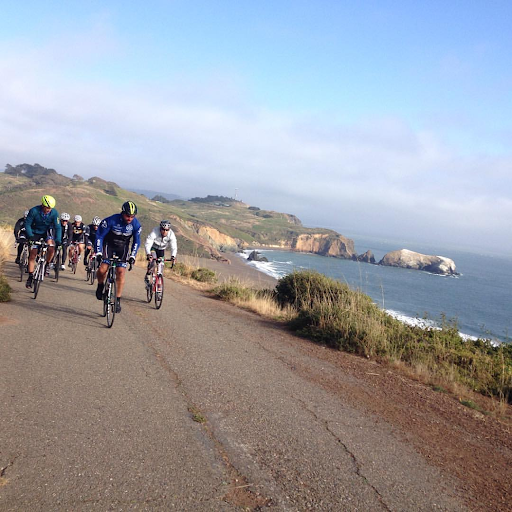Top Tips to Survive your First Century Bike Ride
“Nothing compares to the simple pleasure of riding a bicycle” - JFK.
I believe that there is no activity that can transcend you back to your childhood more than riding a bike. The evidence is clear with the rise in popularity of charity bike rides. With the influx of new cyclists signing up for bike rides of up to 100 miles, I find myself watching many newbies making the same mistakes. Whether you are prepping for a 25 mile or 200 mile ride, there are some basics that you need to do savagely well in order to have a successful event!
1) Build a foundation of strength training
A wise man once said, “you must put the horse before the chariot”. Before you go out and spend a bunch of money on a carbon fiber bike or aero handlebars, you need to work on getting your body physically prepared. Starting with a strength and conditioning program will help you improve performance, reduce the likelihood of injury, and increase overall enjoyment of the event. When you consider your S&C program make sure you address the following areas...
Posture: One of the biggest complaints I hear from cyclists is that their back hurts during or after riding. While this could be from a poor set up but most of the time it is due to poor strength and postural control. Spending the time to get your abs, obliques, and lower back extensors strong will ensure that you can pedal pain-free all day.
Hip stability: Strong abs and glutes are the transfer point for your body to bike. Without stability in your hips you will rock back and forth and lose power.
Flexibility: Having flexibility; especially in the hip flexors and hamstrings, will allow you to maintain proper positioning on the bike without pain
Power generation:. Having more strength means more muscle to turn over the pedals. This is especially important for pedaling up steep hills. A major mistake I see endurance athletes make is that they train low weight, with high repetitions: in order to improve our cycling power, we need to consider lifting heavy weight.
2) Put smart miles in!
There is no way around it, you need to put time in the saddle in order to get across the finish line. I recommend riding 2 to 3 times per week consistently. One time per week should be dedicated to aerobic (zone 2 HR/ power) training and 1-2x per week should be dedicated to an intensity specific session.
Aerobic training sessions are typically longer than 90 minutes where intensity is around 50-65% of your max. I often schedule an aerobic ride over the weekend when I have more time. This a great time to ride with friends and make it a more social experience. Not only does riding with others make the miles more fun, you learn the skills of riding with a group. I recommend long aerobic ride 1 time per week.
Intensity specific sessions are typically 45-90 minutes in length. During these sessions, our focus is to develop speed and higher power efforts. These sessions are best done on a stationary bike trainer because you can dial in your effort without external factors such as environment, traffic lights, and road conditions affecting you. I recommend finding a spin class to get in these intense sessions 1-2 times per week.
3) Invest in the most important equipment
Cycling can turn into a very expensive sport very quickly. There are a million carbon fiber products on the market designed to save you grams of weight; It always makes me chuckle when I see a guy on a decked out ultralight weight $10K bike, but he is 20 lbs overweight. Unless you are competing for the Tour de France, save your money and invest in these products that will help you enjoy riding more…
Quality cycling shorts. I recommend spending at least $75 on a high quality pair of cycling shorts. Your man and lady parts will thank you! Not only do the shorts provide more cushion for your butt, they also wick away sweat to prevent chafing.
Split channel saddle. When you purchase a bike, it will typically comes with a cheap stock saddle that you can throw in the trash. I recommend trying out a couple of saddles to see what works best for you. A couple of options to try out are SMP, Cobb, or ISM (triathletes). I can’t stress enough how important this is.
Clip in pedals and shoes. Don’t be afraid of clipping into the pedals. Sure there is a learning curve but once you’ve master this simple skill, you will have more control of the bike and a more efficient pedal stroke. The best way to learn how to clip in and out is to practice on a stationary bike. I recommend Shimano Road pedals.
4) Fueling and Nutrition
What good is a sports car if you do not put gas in the tank? If you want to ride long you need to proactively be fueling and hydrating the body during your event. The typical rule of thumb is consuming a bottle (16 oz.) of water every hour that you ride, and consuming roughly 150-350 calories per hour. Every cyclists rate of absorption is different so experiment in your training to find what works best for you.
Eat BEFORE you get Hangry. Don’t wait until you’ve hit the wall to take in calories. You need to consume calories early and often. You can set a timer on your Garmin to alert you when to fuel and drink. Getting to the point of starvation will lead to overeating and a sluggish feeling the rest of your ride.
Stick to whole foods. Avoid sugary gels and sports drinks as much as possible. Whole foods are easily digestible and avoid the sugar crash caused by an insulin spike. Check out the Feed Zone Portables Cookbook for some awesome recipes! If cooking isn’t your thing, I would also recommend Picky Bars for a high quality carbs and protein bar.
Start with a quality breakfast. Beside carbs, make sure your pre-event breakfast has protein and fat keep your fuel stores topped off and ready for a long day.
5) Research the course profile and conditions
Make sure that you know the demands of the route and what the weather conditions will be. Use the event’s website to download the route and examine it ahead of time. It’s also a good idea to talk to someone that has already done the ride and can give you some more details. Check out the event’s Facebook page and ask questions about the ride.
Identify the long climbs. Being mentally prepared for a long hill climb can make a major difference in your motivation to reach the top. Mark down the most challenging sessions on your route sheet so you know what to expect and when.
Know the key turns. Don’t take it for granted that the course will be clearly marked for you. Missing a key turn can cause you to add extra miles to an already long day!
Consider the weather. Is wind or heat going to be factor? A hot day will mean you need extra focus on hydration. Windy could mean that the flat section you were expecting to be easy is actually harder than you thought and causes you to expend more energy. Make sure you consider the worst case scenario and be prepared for it.
It is my goal to help people like you to enjoy riding their bike pain-free! My approach is to educate and empower athletes through the use of sustainable solutions - Together we can reach the finish line! If you are training for a cycling event, I would be happy to help you out. My coaching services include cycling coaching, consulting, strength and conditioning, and more. Please send an email to CoachDavidWinton@gmail.com for more information or hit me with DM on instagram @trainer_dave
Train Well my friends!





